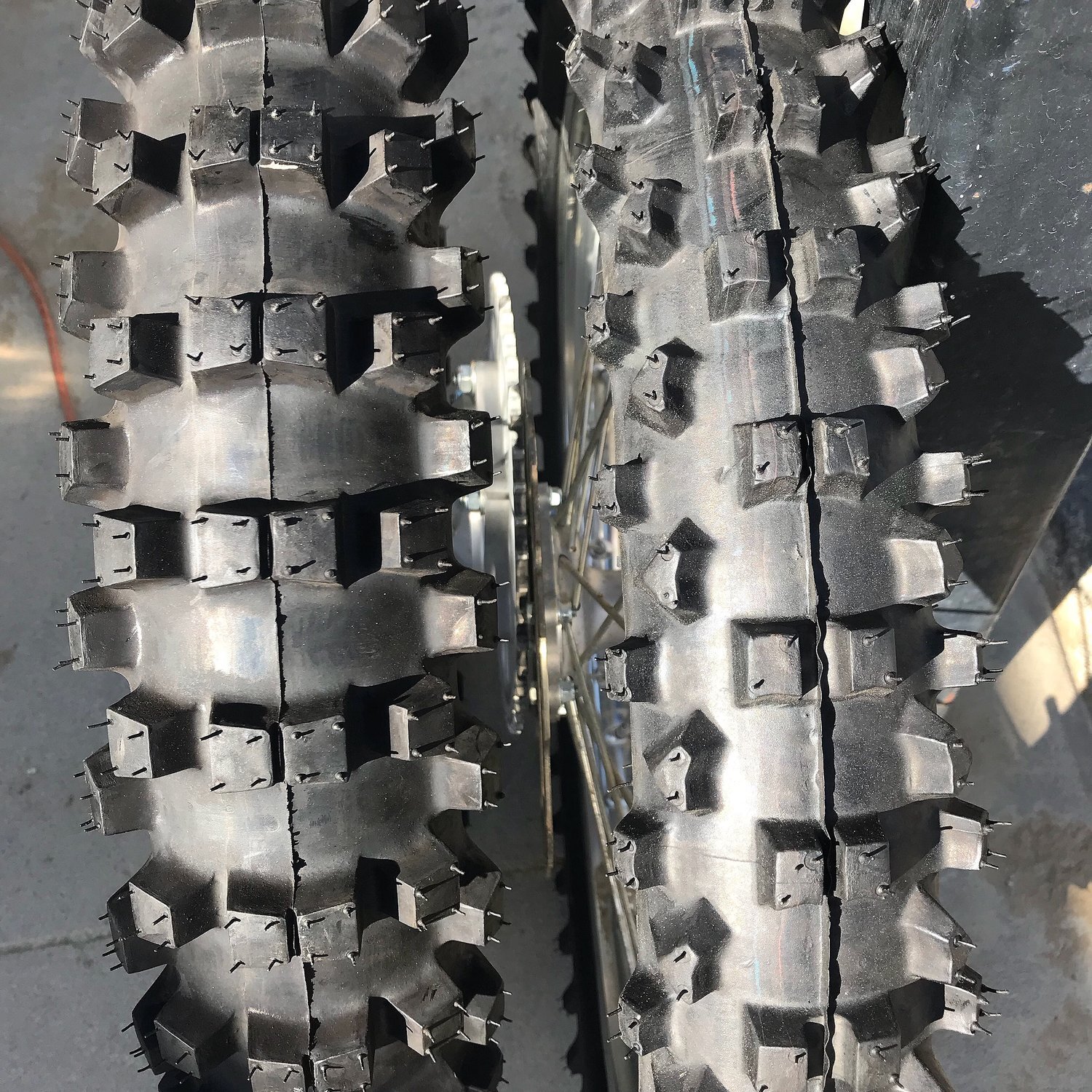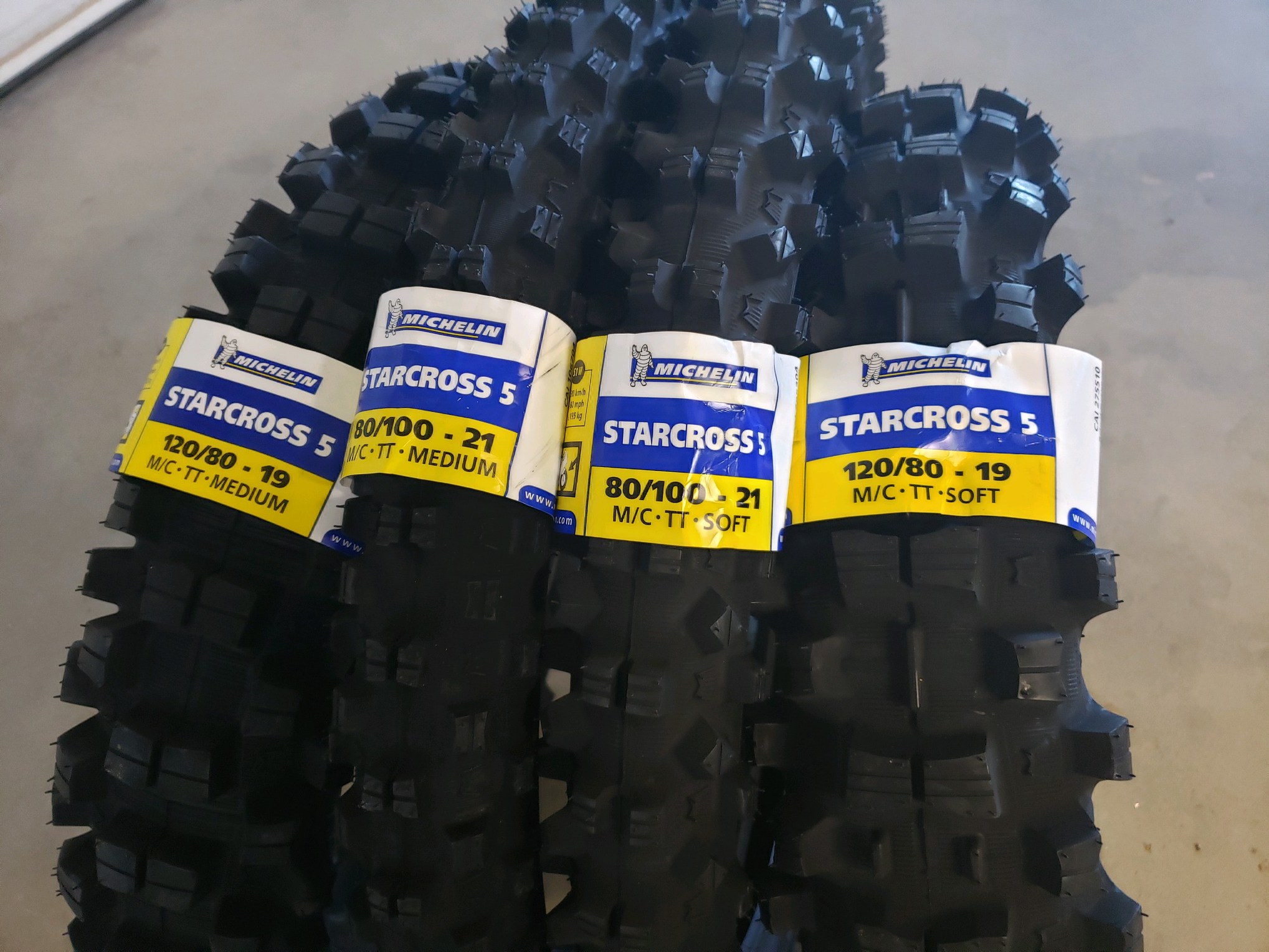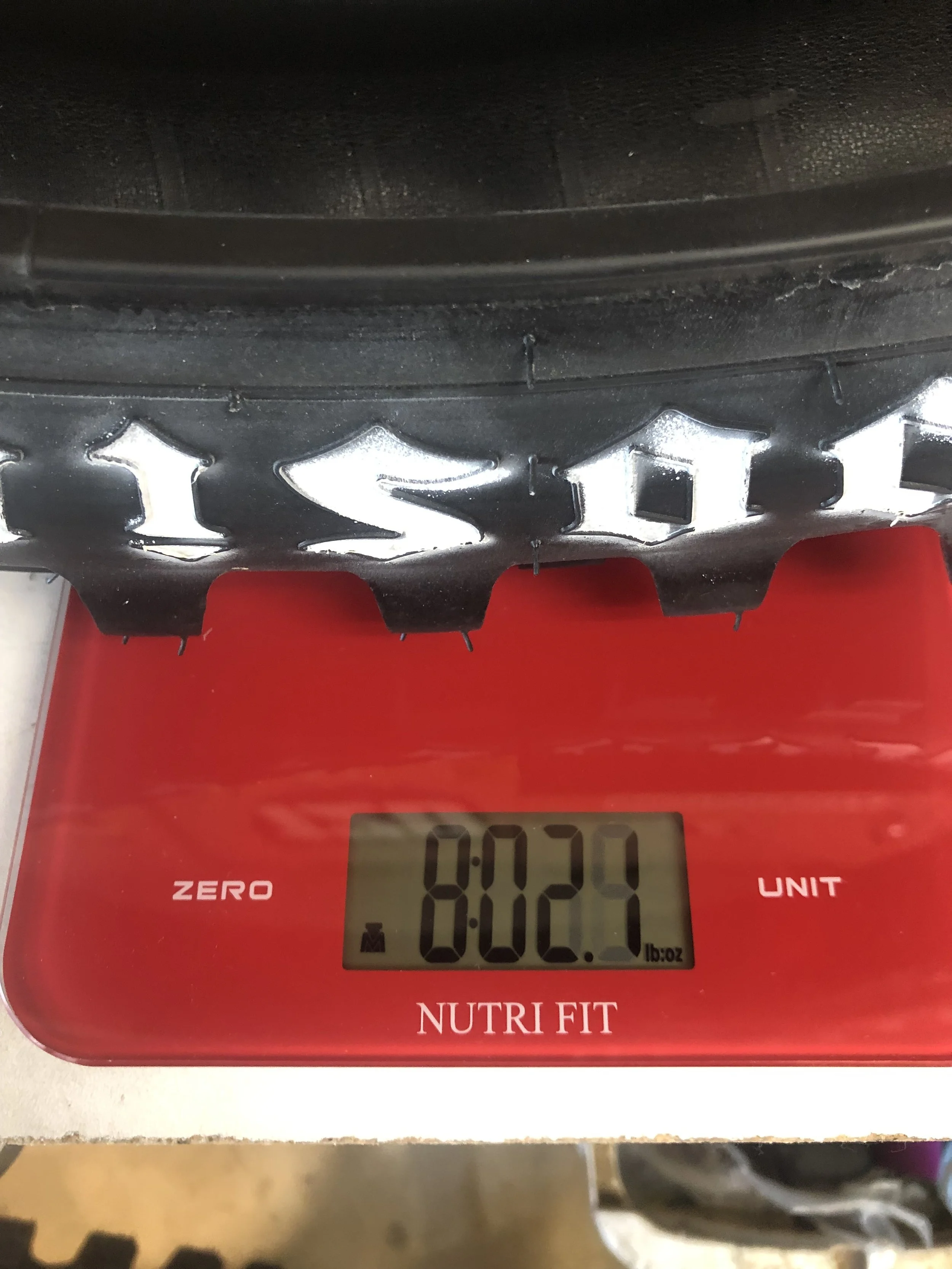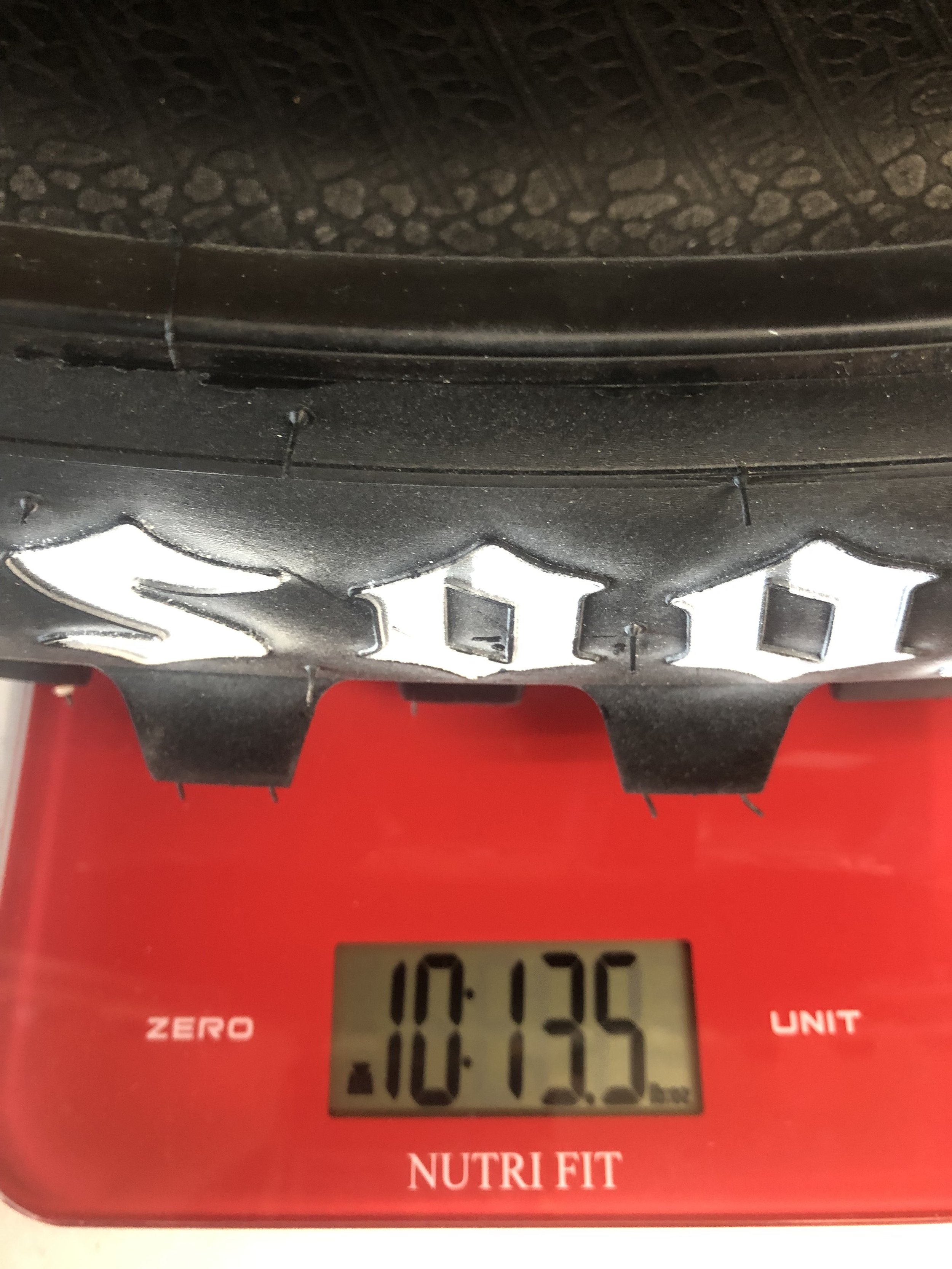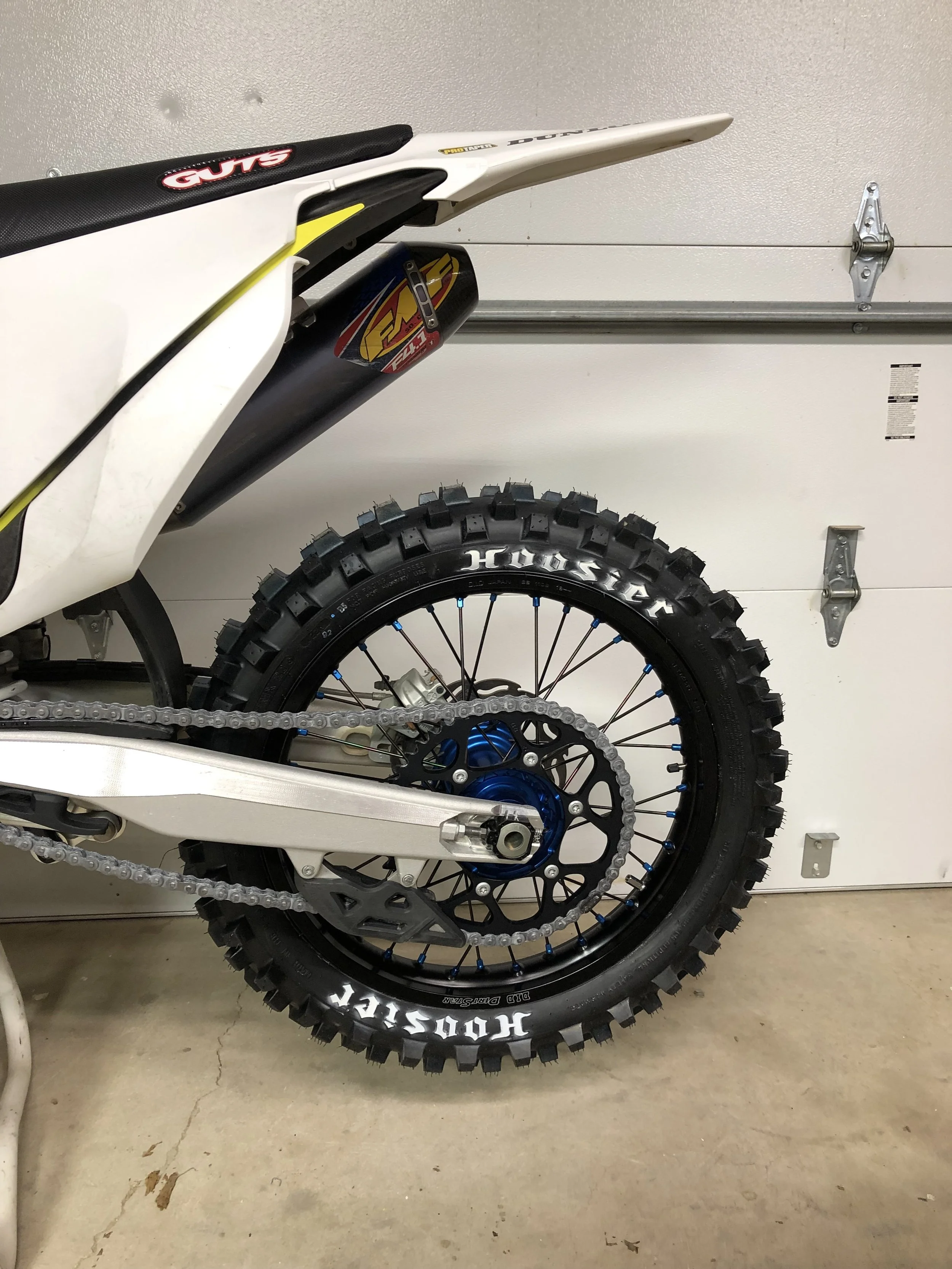Dunlop offers a wide variety of tires for us moto/off-road guys but you don’t see too many reviews of the MX12 scoop tire out there. I recently had the chance to try a 120/80-19 rear MX12 at a few different tracks that range from sand to intermediate terrain with the occasional hard pack afternoons at Glen Helen. The Dunlop Geomax MX12 rear tire is a soft-terrain tire designed specifically for sand and mud conditions. The Geomax MX12 is the replacement for the MX11 that was out a few years ago. The Geomax MX12 rear tire was made to try and improve performance in mud, sand and soft dirt while expanding the range of conditions it can be used compared to the older MX11 design. Dunlop designed the MX12 to have increased rear wheel acceleration traction, lean angle grip, improved control in ruts and enhanced bump absorption when coming into corners.
Fresh Dunlop MX12
With Dunlop’s V-block tread pattern and over 1.5 inches between each row of knobs, the MX12 is can scoop dirt and help move the motorcycle forward in places where a standard MX33 tire would need more help. Additionally, the V-block pattern helps fling mud off of the tire and cleans it off in wet conditions. Dunlop’s block-in-a-block progressive cornering knob technology, used on the MX33 and MX53 tires, has been implemented on the MX12 as well to help cornering traction and slide control. Ribs have been added to the backside of the knobs to improve stability in braking and choppy rutted out corners. No matter how much traction you get out of a tire, it will never be good without consistency. Without these ribs, the steep knobs could bend and fold over, which you don’t want when trying to get on the throttle hard (while leaning) out of a corner. In the testing world, we call this “cornering stability”.
I have ridden with a Dunlop MX12 on 250 and 350’s before but this was the first time I have experienced it on a 450. It’s seriously like cheating when coming out of softer corners. Getting on the throttle harder is made easier as the motorcycle accelerates harder with less throttle. This also makes abusing the clutch much less and allows the rider to use less energy around the track. Another notable positive for me was being able to use alternate softer lines that were too deep for previously used soft to intermediate tires. Instead of sinking into soft soil, the MX12 tire stayed on top of the dirt much better than other soft-intermediate tires. When compared to the Dunlop MX11, the MX12 is easier to lean into a corner and maintain that lean in a choppy rut. Cornering stability has improved on the MX12 (compared to the MX11) and it’s also easier to keep that lean in a rut that is choppy and hacked up.
Dunlop MX12 With 6 Engine Hours Of Soft To Intermediate Terrain Time
The portion of the test where I was most impressed though was how the MX12 reacted to harder conditions. On intermediate to hard terrain, the MX12 dug into the dirt and hooked up surprisingly well. With the added stability from the reinforcing ribs and the staggered knob pattern, the MX12 felt better than some other intermediate to hard terrain tires I have ran lately. The downside to the MX12 was that on hard pack flat corners it doesn’t have the best lean angle grip. It will slide around more than I would like, but that is to be expected on hard pack with a scoop. However, if there was only a couple parts of the track that had hard pack corners (and the rest of the track was softer), I would gladly take this MX12 because that is how good it works on the other parts of the track. The durability of the MX12 is great if used on strictly soft terrain, but if used on intermediate terrain it can break down the carcass of the tire much quicker. The knobs will not chunk as quick as the carcass will break down. The ribs in-between the knobs will break down over time faster on hard pack. A starting point that I liked for air pressure was anywhere between 12-12.5 PSI.
Dunlop MX12 With 8.6 Engine Hours Of Soft To Intermediate Terrain Time
If you are looking to get great starts on softer conditions and hook up out of corners like you never have before, look at the MX12 scoop tire. This tire has changed my way of thinking when it comes to what I am going to be running on race day. I wouldn’t even mind running it on late afternoon motos at Glen Helen. Just because of the scoop design, don’t disregard this tire when the conditions go from soft to intermediate. This MX12 rear tire still hooks up well! You can find the MX12 over on rockymountainatvmc.com for $93.00.





